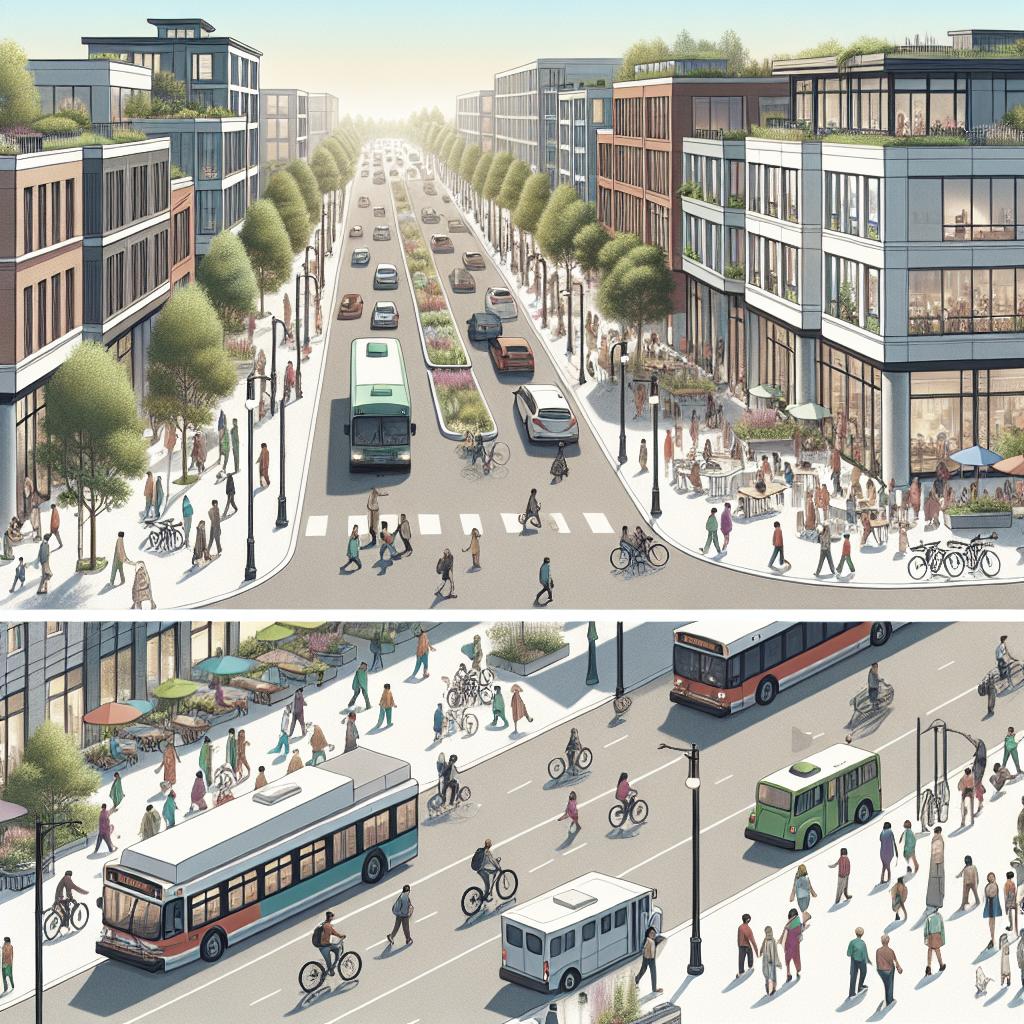<>
“`
Abstract
Urban development and historical preservation often seem to be at odds, yet they can coexist harmoniously with the right strategies. This blog post explores how cities can integrate historical preservation into urban development plans. We delve into conceptual frameworks, plan quality variations, and effective coding protocols while examining data from U.S. state capitals. Findings reveal the balance between historical preservation and urban growth, offering practical recommendations for city planners and policymakers.
Introduction
Urban landscapes are constantly evolving, often putting historical sites at risk. However, integrating historical preservation into urban development is essential for maintaining cultural heritage while fostering economic growth. This post investigates how cities can achieve this integration through comprehensive urban planning. By exploring various frameworks, assessing plan quality, and providing case studies, we aim to highlight best practices and future directions for city planners and policymakers committed to preserving history within modern contexts.
Materials and methods
Conceptual framework
The conceptual framework for this study focuses on the coexistence of urban development and historical preservation. It encompasses theories of sustainable development, adaptive reuse of historical sites, and community engagement. The goal is to create a balanced approach where modernization does not erase history but rather integrates it, enhancing the city’s cultural and economic fabric. This framework helps in understanding the dynamics between urban growth and the need to protect historical landmarks. By applying this model, city planners can devise strategies that support both development and preservation, ensuring long-term community benefits.
Explaining variation in plan quality
Plan quality varies significantly across regions and is influenced by multiple factors such as government policies, financial resources, and community involvement. By analyzing these variations, we can identify best practices and areas needing improvement. This understanding can guide future urban planning efforts towards a more inclusive historical preservation approach. High-quality plans often result from collaborative efforts among government bodies, heritage organizations, and local communities. They incorporate comprehensive guidelines and actionable steps to protect historical sites while allowing for modern amenities and infrastructure.
Study samples and data sources
Our study primarily focuses on the local comprehensive plans of U.S. state capitals. Data is collected from city planning departments, historical preservation organizations, and governmental databases. These sources provide a robust foundation for analyzing current practices and identifying gaps in incorporating historical preservation into urban development. By studying diverse cities, we gain insights into different approaches and methodologies. This diversity helps in formulating universal strategies that can be adapted to various urban contexts, ensuring historical preservation while supporting modern growth.
Coding protocol
A structured coding protocol is essential for systematically analyzing urban development plans. Our coding scheme categorizes various elements such as preservation policies, community engagement strategies, and adaptive reuse techniques. This approach allows for a consistent evaluation of plan quality across different cities. The coding protocol also facilitates comparative analysis, highlighting best practices and common pitfalls in historical preservation plans. This systematic approach ensures a thorough assessment and provides actionable insights for city planners and policymakers.
Reliability assessment
Reliability assessment is crucial for ensuring the validity and consistency of our analysis. We conduct inter-coder reliability checks to confirm the accuracy of our coding protocol. This step ensures that our findings are reliable and can be confidently used to guide future policy recommendations. By maintaining high reliability standards, we ensure that our conclusions and recommendations are based on solid evidence. This commitment to accuracy enhances the credibility of our study and its potential impact on urban planning practices.
Results
Overview of total performance
The analysis reveals that while some cities excel in balancing urban development with historical preservation, many fall short. High-performing cities often have strong government support, adequate funding, and active community involvement. These elements are crucial for creating and implementing effective preservation plans. Overall, cities with well-integrated historical preservation policies experience enhanced cultural vibrancy and economic benefits. These results underscore the importance of comprehensive planning and collaboration among various stakeholders.
Indicator performance
Performance indicators such as financial investment, policy framework, and community engagement levels vary among cities. Successful cities often demonstrate high levels of investment in historical preservation and have robust policy frameworks supporting these efforts. Community engagement also plays a significant role in plan quality. Cities with active community participation in preservation efforts tend to have more effective and sustainable plans. This finding highlights the necessity of involving local communities in urban planning processes.
Multivariate analysis of plan quality
Multivariate analysis provides deeper insights into the factors influencing plan quality. Variables such as economic conditions, political support, and cultural heritage significance all impact the effectiveness of historical preservation efforts. This analysis helps in identifying key drivers and barriers to successful plan implementation. Understanding these variables enables city planners to tailor their strategies to local conditions, ensuring more effective preservation efforts. Personalized approaches based on multivariate analysis can significantly enhance the integration of historical preservation into urban development.
Discussion
How well do the local comprehensive plans of U.S. state capitals integrate the historic-preservation element?
The integration of historical preservation in local comprehensive plans varies significantly among U.S. state capitals. Cities with detailed and actionable preservation plans often see better integration and outcomes. These plans typically include specific guidelines, dedicated funding, and clear roles for various stakeholders. However, many cities still struggle with adequately incorporating historical preservation into their urban development strategies. Issues such as lack of funding, political will, and community support hinder effective integration. Addressing these challenges is crucial for improving plan quality.
Do local comprehensive plans vary in quality? If so, which variables are related to plan quality?
Yes, local comprehensive plans do vary in quality. Variables such as economic resources, political commitment, cultural values, and community involvement significantly influence the quality of these plans. Cities with strong economic and political support for historical preservation often produce higher-quality plans. Community involvement is another critical factor. Cities that engage local communities in the planning process tend to develop more effective and sustainable preservation strategies. This finding underscores the importance of inclusive planning practices.
How can we ensure that historic preservation is incorporated into local comprehensive planning systems?
Ensuring the incorporation of historical preservation into local planning systems requires a multi-faceted approach. First, strong governmental policies and financial commitment are essential. Without adequate funding and political support, preservation efforts are unlikely to succeed. Secondly, community engagement is crucial. Involving local communities in the planning process fosters a sense of ownership and commitment to preservation efforts. Educational programs and public awareness campaigns can further enhance community involvement. Finally, adopting best practices from successful cities can provide valuable insights. By learning from cities that effectively balance urban development with historical preservation, other cities can adopt and adapt these strategies, ensuring better integration and outcomes.
Final thoughts
“` “`
| Section | Summary |
|---|---|
| Abstract | Overview of integrating historical preservation into urban development. |
| Introduction | Emphasis on balancing urban growth and preserving historical sites. |
| Materials and methods | Explains the framework, methodologies, and data used in the study. |
| Results | Discusses findings from the analysis of U.S. state capitals’ comprehensive plans. |
| Discussion | Evaluates the integration and variation in plan quality, offering strategies for improvement. |
“`


